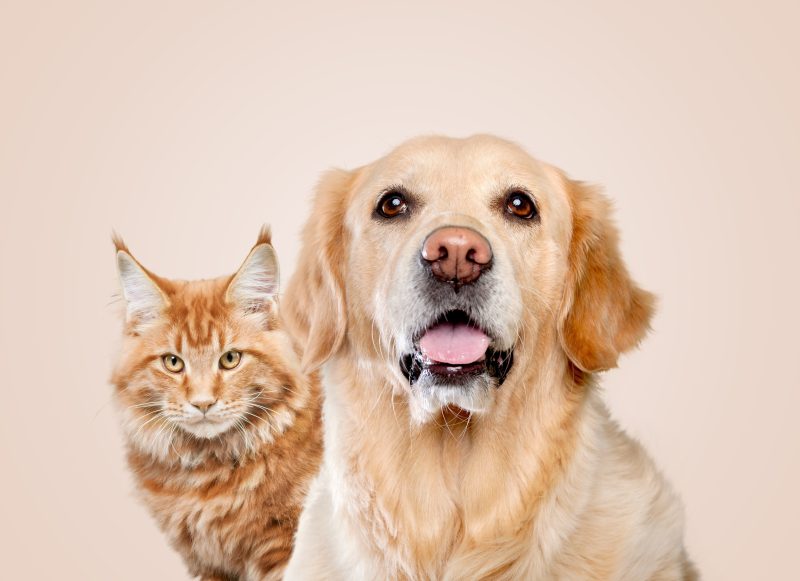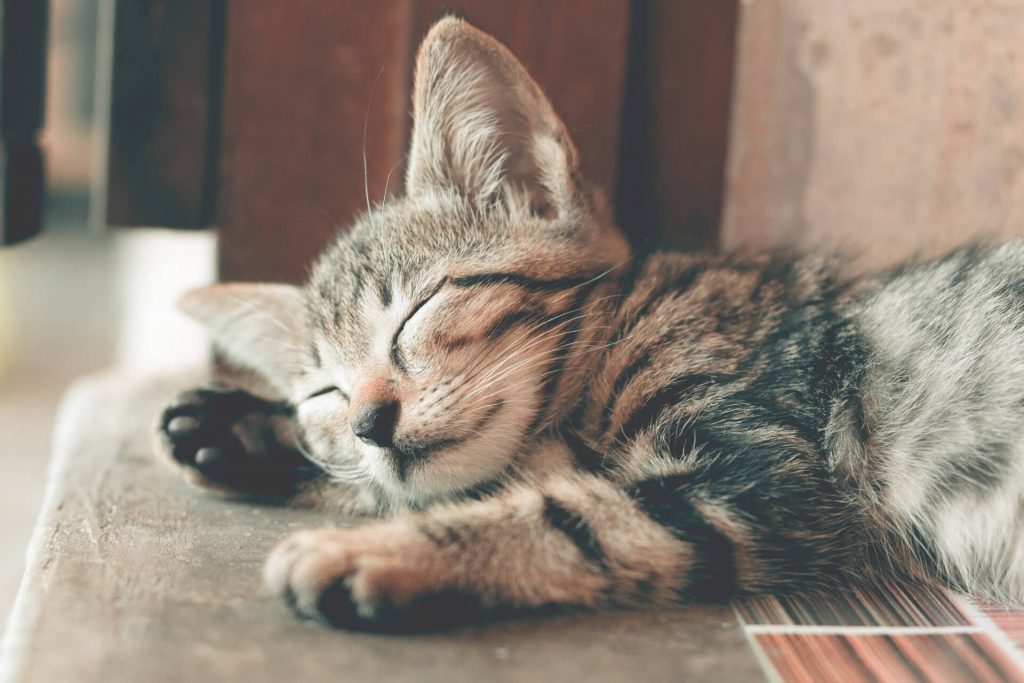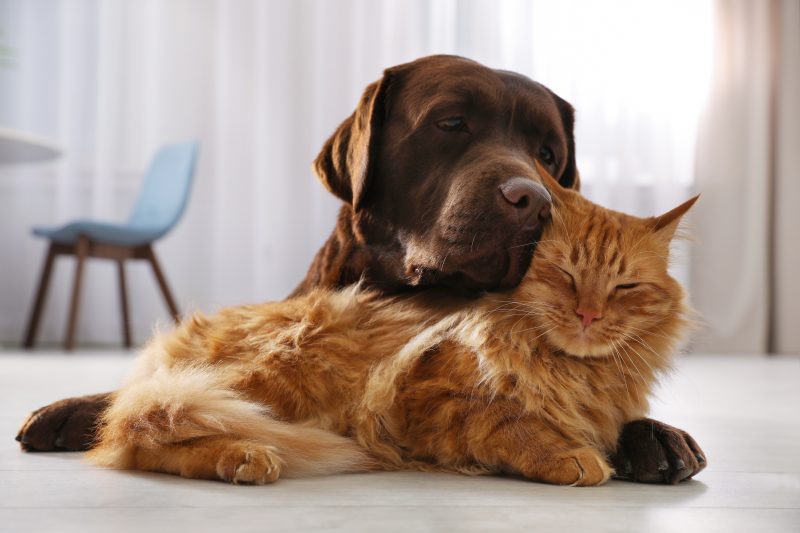Time to read: 10 mins
What is pet insurance and is it worth it?
Pets are a key part of many of our lives. They are members of our families, a source of happiness and adventure, and provide comfort to us when we need it most.
In this guide, we’ll highlight the different types of pet insurance available for your dog or cat. What types of treatment they may cover, and some common things to be aware of to help you decide on the best cover option for your four-legged friend.
What animals can I cover?
Pet insurance covers a number of different animals. The vast majority of pet insurers you’ll come across focus on cats and dogs as they are by far the most common pets in the UK. More specialist providers can be found for less common animals such as birds and even lizards, snakes, tortoises and birds of prey.
Here at Scratch & Patch we specialise in cat and dog insurance.
What treatment does pet insurance cover?
Pet insurance is primarily there to help protect you against the financial burden of medical costs when your pet needs to undergo treatment. However, there are a number other benefits that come with pet insurance which can help with costs or losses incurred from your pet’s illness or injury.
Vet fees
As mentioned this is the fundamental purpose of pet insurance. It means that you are able to claim for the cost of veterinary treatment that your pet has undergone during your policy.
Most policies cover treatment resulting from accidental injuries (such as road traffic collisions) and illnesses.
You might also find some providers that cover treatment related to injuries and illnesses such as physiotherapy, hydrotherapy, osteopathy, chiropractic treatment and more.
One other area that is common to find, but doesn’t feature in all policies, is dental treatment cover.
Death of your pet
In the unfortunate event that your pet dies or has to be put down by a vet some policies will cover the cost of this.
However, check your plan terms and conditions carefully because depending upon the age of your pet this element of cover can be withdrawn.
Often this results in the cancellation of your policy, in some cases charges are applied to cancel before your renewal date, however most providers, including us, will waive the cancellation fee in the event of the death of your pet.
Loss and recovery cover
Should your pet be lost or stolen, your policy may cover the purchase price of your pet.
It’s important that you check whether there are any limits on your policy as some providers will have inner limits for loss and recovery, so for example if your pet cost you £1,000 and your insurer’s loss and recovery limit is £500 then that will be the payout you receive.
In some cases you’ll also be able to receive cover towards advertising and rewards to help find your lost pet. Claims under these sections tend to require you to report your pet as missing and then pays out if your pet is not found in 30 days.
Third party liability
Most policies give you cover up to a limit if your pet causes damage to property or if they’re involved in an incident that leads to someone being killed or injured.
In the unlikely event that your dog seriously injures or kills someone, then the legal costs that may result could run to the hundreds of thousands of pounds. Most insurers start their third party liability cover at £1,000,000, but higher levels can be found if required.
Travel and holiday cancellation
You can be covered for vet fees you incur should your pet need treatment whilst you are abroad.
Under the same section of cover you can also claim for costs of holiday cancellation and repatriation if your pet is ill while you’re away and you need to cut your trip short.
You can also find out more about pet travel restrictions by checking the UK / EU PETS Scheme Area.
Boarding fees
If you need to enter hospital yourself for any reason, and your pet needs to be moved to a kennel or cattery then most insurers offer to cover the cost of this boarding. In some cases you might find policies that pay out if a family or friend looks after your pet.
It’s also worth checking your policy wording to see if there is a time limit on your hospital treatment before you are allowed to claim under this section of your cover.
What types of policy are there?
Typically there are four types of pet insurance:
- Accident-only cover: This is the most basic, and cheapest, of policies available. It provides cover from injuries arising from accidents. It’ll also provide the lowest level of vet fee cover limits.
- Time-limited cover: Time limited pet insurance policies are there to cover vet bills arising from an accident or eligible illness that your pet may suffer up to a specific cover limit. Each new condition is covered up to the limit for 12 months. If that limit is reached within 12 months that condition becomes excluded from future claims and is classed as a pre-existing condition.
- Maximum benefit cover: This covers each new medical condition up to the cover limit, for as long as the plan remains in force. Allowing you to claim more than once for an eligible illness, year after year. If the cover limit is reached, then the condition will be classed as pre-existing and will be excluded from future claims.
- Lifetime cover: This is also known as reinstatement and covers all new medical conditions after the policy has started up to the cover limit. It allows you to claim for the same condition year after year. If you reach the cover limit then the cover will stop for the remainder of the policy year but the limit will be reinstated upon renewal. Because of this, lifetime plans are the most expensive type of policy, but it can cover your pet throughout their lifetime as long as you keep the policy running. If you cancel or choose not to renew your policy then all cover stops and you will lose the benefit of continuing to cover existing conditions. Lifetime cover is the only policy type that can cover your pet indefinitely if they develop a chronic condition.
As you would expect, different cover types have different levels of cover and some of the more basic plans may not include some features such as travel and holiday cancellation.
What are the common things to be aware of?
There are some exclusions or considerations that you should be aware of before making your decision about choosing a pet insurance provider.
Pre-existing conditions
The 4-levels of cover above all exclude pre-existing conditions, which are medical issues that your pet has suffered from before you take out a plan.
There are some providers, that allow you to get insurance for pre-existing conditions that your pet may have. This is a growing area of pet cover and opens up the potential for customers that may typically be stuck with their current provider can now switch pet insurance.
Pedigree pets
Pedigree cats and dogs will typically be more expensive to insure than cross breeds. This is because they are generally more expensive to purchase and they are considered a higher risk of illnesses and injuries associated with their breed. Mixed breeds tend to bring together a greater resistance to disease by combining two breeds together.
Waiting period
When you take out a pet insurance policy or switch from another provider you’ll enter a 14 day waiting period. During this time most pet insurers will not cover your pet. With Scratch & Patch, we do not have a waiting period for accidents or injuries.
When you join us without having previous continuous cover then any new illnesses starting within the first 14 days of your policy are not covered.
However, if you switch your pet cover from another insurer, we won’t enforce a waiting period, you will be able to claim for illness starting in the first 14 days.
Older pets
As is the case with private medical insurance, the age of the insured is a key factor in determining risk, and therefore the price of the policy. The older your pets the more likely they are to be the subject of a claim. Most pet insurers typically treat cats and dogs over the ages of 8 years old as ‘older pets’ (although with Scratch & Patch it’s cats over 8 and dogs over 10).
You might also find that the excess you need to pay on a claim will increase as pets move into the ‘older pets’ category. Find out more about how insurance for older dogs and senior cats works.
What affects the price?
There are a few main factors that determine the price of your pet insurance policy:
- Age of your pet: As we’ve discussed above older pets are more likely to suffer from injuries and illnesses than younger pets. That’s why insurance for older pets is more expensive.
- Type of pet: The type of pet and the breed you’re looking to cover will determine the price. Generally, cats will be cheaper than dogs to insure, while certain breeds which are more prone to illnesses will also be more expensive to insure.
- Pre-existing conditions you want to cover: If your pet has any medical conditions that you are looking to get cover for then this is possible, but because they are known conditions that may recur it will be more expensive to protect.
- Claims made: If you’re coming up for renewal of your plan than the insurer will take into account any claims you’ve made in the previous policy year.
- Vet fee inflation: In terms of renewals vet fee inflation is a factor. This is the increase in costs of veterinary treatment. Treatment costs for the same procedures have been increasing, and therefore the cost to insure against those procedures increases as well.
How do I claim?
The process for claiming is relatively similar across most providers, the first step involves contacting your insurer on their claims phone line. After that most providers will need you to complete a claims form and submit the details to them. Often there’ll be a section for your vet to complete as well, so you’ll need to work with them to fill this in.
In order for your claim to be processed quickly and easily accuracy is important so you’ll need to verify and provide proof of vet practice invoices and your pet’s medical history.
How is the money paid?
Money can be paid into your nominated bank account or if you and your vet agreed it can be paid directly to your vet practice.
Alternatives to pet insurance
It’s always worth checking on price comparison websites to see cover options from the whole of market, while other websites, such as Nimblefins, go one step further and look at more comprehensive reviews of pet insurance providers.
Because pet insurance is not a legal requirement like car insurance for example, so it’s up to you as to whether you think it’s the best option for you. In contrast to private healthcare, there’s no NHS equivalent for pets that provides an option for treatment. There are a couple of alternatives known as self-insurance, as well as a charities that could help.
Self-insurance
Self-insurance is effectively saving up yourself over time to cover any potential vet costs that you may incur. Instead of paying an insurance premium each month you’d need to consider how much you can realistically set aside to cover your pet.
The benefit of self-insurance is of course that it’s a saving account of sorts, so if you don’t need to claim then the money is yours to do as you wish. However, on the downside there is a risk that should your pet need vet treatment then cost of this can be very expensive. Depending upon what’s needed you could be hit with a bill running into tens of thousands or pounds.
Charities and other organisations
If you’re unable to insure your pets then you might be able to find some charitable organisations that help with treatment for pets. Any help through these organisations is based on means testing of your income. Organisations include The Blue Cross, PDSA, the RSPCA and more.
Common pet insurance questions
Is pet insurance compulsory?
There is nothing that says that you need to have pet insurance in the UK, but given there’s no NHS equivalent for pets it’s worth considering whether pet insurance or self-insurance could offer the best solution.
Does my pet need microchipping?
All dogs need microchipping by law since 2016. In regards to your cat it’s not a legal requirement however by having your cat microchipped you might find you get a cheaper insurance premium.
What affects renewals and do they happen automatically?
Pet insurance is an annual contract that you enter in to. You can cancel if you want to during the 14-day waiting period – after that you may incur a penalty for cancelling before your renewal date.
Most policies have an auto renewal in place, but your provider will be in touch to let you know what your previous year price was, what your renewal price will be and your renewal date.
What if my claim is rejected?
With some providers there’s a period of 30 days to make a claim to be considered for a payout. If you find that your claim has been rejected then you can raise a complaint with your provider, or in extreme cases you’re entitled to escalate it to the Financial Ombudsman Service.
*https://www.statista.com/statistics/308235/estimated-pet-ownership-in-the-united-kingdom-uk/









